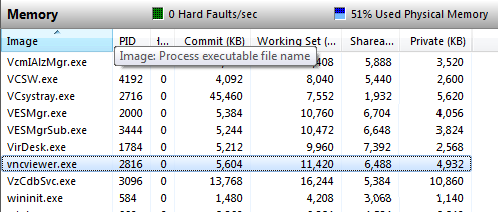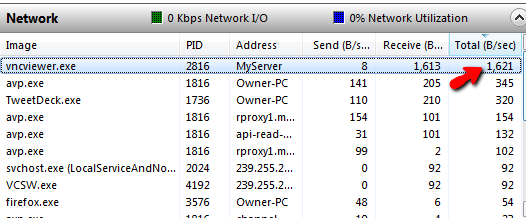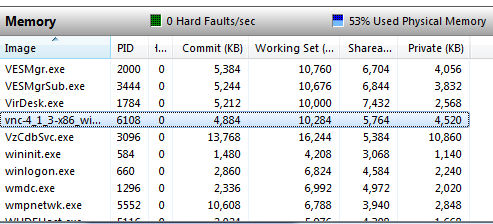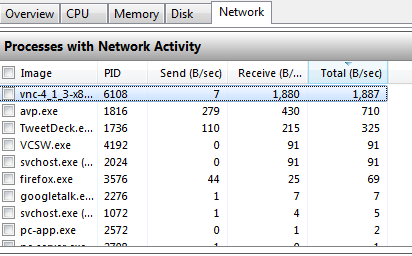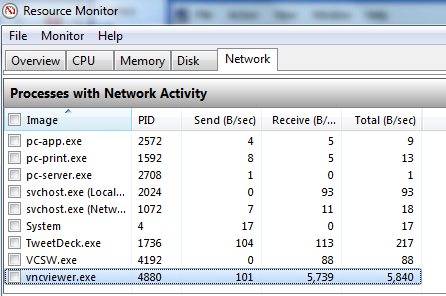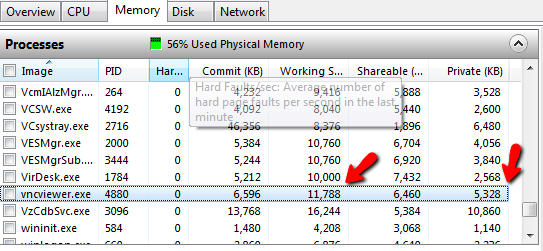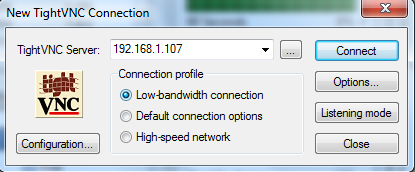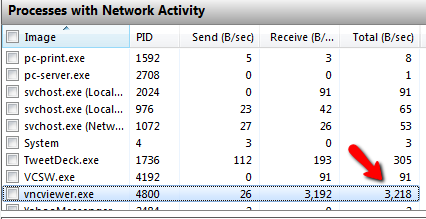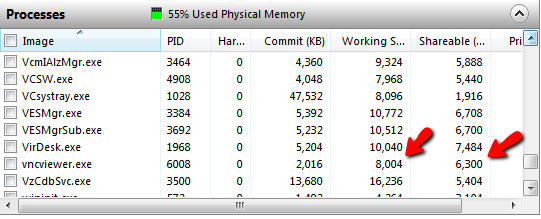When it comes to remotely connecting to a desktop PC or a server, most people quickly opt for installing a VNC server. It's fast, easy to configure, and best of all it's absolutely free. Once you've installed a VNC service on your target computer, you can essentially use any client you want in order to access that service if it is capable of using the VNC protocol.
In my somewhat controversial article on how to spy on your spouse with your computer, I mentioned using RealVNC for Windows to do just that. Then there's Chicken of the VNC for Mac, or VNC access for Ubuntu. If you search free software directories, you'll find VNC clients large and small and everything in between. Recently, I came across TightVNC, another VNC client with a claim that it is distinct because it is "free, lightweight, fast and reliable".
Testing The "Tight" In TightVNC
In order to put TightVNC to the test, I decided to formulate a baseline by running and measuring several other VNC clients before running TightVNC and comparing it to the same baseline. Now, this is by no means a highly-analytical, professional, end-to-end functionality or capacity test. All I want to know is how much memory the application uses while it is running, and how much bandwidth it eats up while communicating with the remote VNC server.
The first client I decided to test is the one that I currently use all the time, called UltraVNC. I really like UVNC - it is easy to run and configure, and fast to connect to my remote clients. I use it to manage our family web server as well as my random PCs throughout the house.
Running UltraVNC, I opened up the Resource Monitor and went straight to the memory area. As you can see, UVNC, which runs under the image name "vncviewer.exe", takes up just under 5,000K of private memory space, with a total of just over 11,000 set aside for the app.
In terms of network utilization, during a fairly low-activity, non-use period of time when I leave the connected screen untouched for about 5 minutes, the network utilization of this connection eventually evened out to about 1,621 B/sec. So, now we have a baseline to compare all other VNC clients to - about 5,000K of memory space and just over 1,500 B/sec.
Next up is RealVNC. This was actually the first VNC client I ever used, and it remains the VNC server app that I still use. Running the RealVNC client, the Resource Monitor showed nearly the same performance, only slightly better. About 4,520KB in private memory and about 10,284KB total.
On the flip side, I noticed network bandwidth consumed by RealVNC was just slightly higher than UltraVNC at 1,887 B/sec, but not a whole lot higher. Since the bandwidth can fluctuate significantly from time to time - easily 200 B/sec at least - then for all intents and purposes these two apps perform nearly the same in every way.
There is another free VNC client that you may or may not have heard about called TigerVNC. TigerVNC is interesting because its creators say that they focused on performance and remote display functionality. We'll get to the functionality in a bit, but first we need to complete our measurements for this third VNC client. Network Activity for this one appears to be significantly higher for this VNC client - almost five times higher than the last two.
As far as I could tell, I was doing everything the same way during the measurement - waiting a few minutes after leaving the screen idle before taking a measurement. Regardless, network usage appears to be quite a bit higher.
The memory consumption, however, appears to be right along the same lines as UltraVNC. So, whatever the programmers did to increase functionality and consume more network bandwidth, they did it without consuming any more memory than UltraVNC.
As far as added functionality, it's true that you can see more features immediately available at the top left corner of the view screen. With one mouse click you can zoom, launch the windows menu, or utilize "Control-Alt" on the remote client. I couldn't really tell whether the display quality was any better than the other two VNC clients, but if the network use is any indication, then it probably is.
Finally, we come down to the one VNC client that has made the claim to be the tighter VNC client - TightVNC. The first thing you'll notice when you launch TightVNC is that you can opt for a "low-bandwidth connection" before connecting to your VNC server.
Looking at the network bandwidth under the "low-bandwidth" setting, you can see that the network consumption is still higher than UltraVNC or RealVNC - about 3 times higher. However, it does beat out TigerVNC in terms of bandwidth.
In terms of memory use, TightVNC does indeed blow away the competition by a difference of approximately 2,000KB less of total reserved working space. Considering that it appears to be working pretty hard over the network to provide adequate functionality, the smaller footprint is pretty impressive.
So, there you have it folks. While TightVNC may not exactly live up to the hype, and in fact fails to achieve significant bandwidth improvements, it does indeed meet the claim that it is lightweight. For anyone concerned with the overall memory space active applications use up on your PC, then TightVNC will at least save you a little bit of space.
Have you used many VNC clients before? What's your favorite client and why? Share your opinions in the comments section below!
Image credit: Anders Engelbøl


